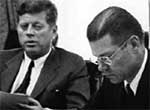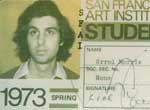Ron Rosenbaum.com - December 11, 2007
I must admit I felt at least three types of envy about my friend Errol Morris’s December 10 blog post in the New York Times on line.
1)It is perhaps the single most purely pleasurable blog-type post I’ve read in a long time.
2) I think he’s created an entirely new, post-post-modern literary form: the discursive essay in the form of replies to comments on a blog post, which itself was a commentary on two photographs. So it’s commentary on commentary on his original commentary. (And I guess you could say this is a commentary on a commentary on a commentary on a commentary.)
3) Now the rest of the world gets to share what I selfishly regarded as one of my greatest intellectual pleasures: my often hour-long phone conversations with Errol (and occasional get-togethers with him and his whip-smart wife Julie) in which I got to listen to Errol’s mind wander over an astonishing variety of speculations on arcane, but—as he made your realize—urgent foundational questions on the nature of reality. the mystery of of consciousness and the question of truth. (Before he became a filmaker—you know him from The Thin Blue Line, , among many others (don’t miss his first, Gates of Heaven—he was a graduate student of philosophy at Berkeley and a private investigator as well).
I’ve always loved the literature of commentary. It’s no surprise my favorite modern novel is Nabokov’s Pale Fire a novel in footnotes. And that one of my favorite books of all time is Robert Burton’s The Anatomy of Melancholy a Late Renaissance commentary on all previous commentaries on virtually all possible subjects (melancholy being an excuse to record and send up all manner of the conflicting wisdom of the past). Another favorite along those lines: Sir Thomas Browne’s seventeenth century Urne Buriall Don’t miss it!.
You may have read or read about Errol’s epic multi part analysis of two Crimean War photographs of cannonballs on or beside a road and which came first, which was “authentic” (whatever that means) and which was “posed”. And what either solution meant.
When he invited readers to suggest their own solution to the question he got an unprecedented outpouring of thoughtful replies and in his December 10 blog post he goes to great length to begin to reply to some of the most salient, challenging and/or provactive.
I must admit the thing I liked most about the first two essays on the cannonball photos themselves was it’s digressions from the focus on the subject, the chance it gave for Errol to share his immense number of preoccupations with the resonant curiosities of literature and philosophy and history. (The other thing I liked most was the opening paragraph of his first essay in which he quotes me. (saying nothing profound, just something like “You’re telling me you went all the way to the Crimea because of a couple of old photographs.”) That two-part post (and all his previous essays in his series including one on the perplex of the Abu Ghraib “Hanged Man”) are all rich with resonant digressions.
But the December 10 post is all\ digression (just about) and it’s great! It gave me the kind of pleasure I get from reading Pale Fire and Burton and Browne.
Don’t miss the excursus on the use of albatross eggs to provide the albumen for photo emulsions in early film developing. Or the meditation on Descartes Medidtations .Or the succinct and devastating deconstruction of deconstructionists’ dim witted view of truth (just because we can’t necessarily know it they rashly conclude it doesn’t exist). This leads to his critique of the correlative misreading of the film Rashomon and his desire, expressed in a footnote for a Rashomon about Rashomon. (Errol’s a post-post modernist).
But I won’t spoil the fun. It’s great reading and unique thinking. Go to and enjoy it all.







